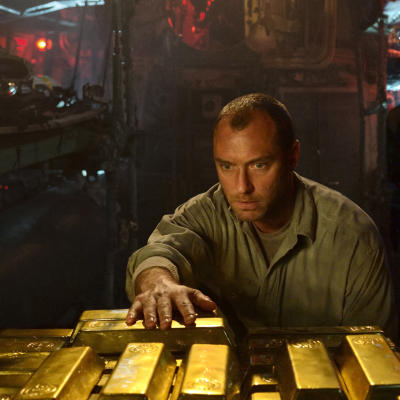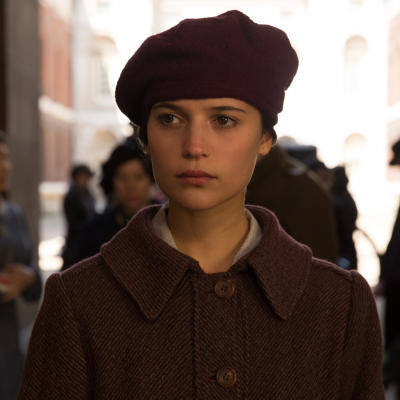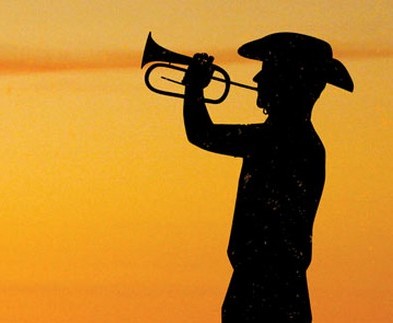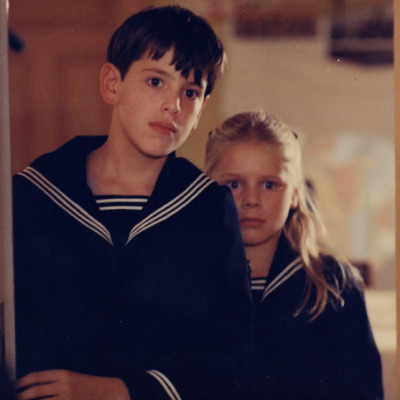The Anzac Centenary is nearly upon us. It is not just a day to remember those Australians who perished at Gallipoli, but to ponder the effects of war on everyone all around the world. Here are five devastating and thought-provoking films about the First and Second World Wars that soberly and sombrely examine the effects of war not just on enlisted men and women, but also on those who remain behind.
La Grande Illusion (1937)
Jean Renoir’s World War I prisoner-of-war drama La Grande Illusion has been universally acknowledged as one of the finest French films ever made. While on a reconnaissance mission, two aviators played by Pierre Fresnay and Jean Gabin are shot down and taken prisoner, but not before a meeting with the German Rittmeister von Rauffenstein (a beautiful performance by Erich von Stroheim). La Grande Illusion sets itself apart from other war movies because of its wonderfully moving humanism. The film is harshly realistic, but poetic, honing in on the common ground between the French prisoners and their German captors. In this incredible film, there are no villains - no good guys versus bad guys - just people trying to get by as best they can.
Paths of Glory (1957)
This bold anti-war film is the work of Stanley Kubrick. Before he became the director of such cinematic titans as Dr. Strangelove and 2001: A Space Odyssey Kubrick made this Kirk Douglas-starring piece based on the novel by Humphrey Cobb. Set during World War I, Paths of Glory film is short, minimalist, but full of rage and despair. It tells the story of Colonel Dax, a commanding officer who fights for the freedom of men accused of cowardice in a court-martial after refusing to follow an order that was essentially suicide. The stark black-and-white imagery and long takes put us right there in the trenches, and in the dead of night where the men shake with uncertainty and fear. Even without overt violence or action, this pessimistic and anti-authoritarian film is no less powerful today.
Gallipoli (1981)
The Mel Gibson-starring Gallipoli is one of Australia’s finest films. Director Peter Weir abandoned the eeriness and abstract nature of his previous work (Picnic at Hanging Rock and The Last Wave) for this hard-hitting story of the Gallipoli campaign. Archy Hamilton (Mark Lee) and Frank Dunne (Gibson) meet by chance in rural Western Australia, before hopping a freight train to Perth to enlist in the Australian Imperial Force. The film follows the young soldiers from Australia to Egypt to the Turkish coast, where they are thrust unceremoniously and under-prepared into bloody battle. This is the quintessential Australian war film, expounding upon the power of friendship and teamwork, which is all represented the single, overwhelmingly powerful freeze frame that closes the movie.
Grave of the Fireflies (1988)
Grave of the Fireflies is an outlier on this list not only because, being Japanese, it comes from a completely different perspective, but also because it is animated. This film comes from the famed Studio Ghibli, known for the hits My Neighbor Totoro and Spirited Away, but it is definitely not for children. With this film, writer and director Isao Takahata has created one of the most poetic, heart-wrenching war films that you are likely to see. Displaced after the death of their mother during a bombing raid on Kobe in 1945, Seita and his younger sister Setsuko find themselves facing death for the very first time. Grave of the Fireflies is among the most confronting films ever made, allowing barely a single ray of hope to shine through the darkness.
The Thin Red Line (1998)
Terrence Malick’s films are known to be haunting and prismatic in nature, multifaceted and fragmented, and all the more powerful for it. The Thin Red Line boasts an enormous ensemble cast including John Cusack, George Clooney, Woody Harrelson, John C. Reilly, Adrien Brody and more, who come and go throughout. The vast movie, set during World War II, is drifting and directionless, but it manages to be extremely personal, transforming what could have been anonymous soldiers into fully-formed human beings. You will not soon forget the way the film destructively juxtaposes the idyllic South Pacific setting with the unbearable violence and inner turmoil that plagues the men. Much of the film is embellished with voice-overs that are quiet, rambling, sometimes inaudible, but probe deep into the psyches of the officers and commanders alike like no other film ever has.



